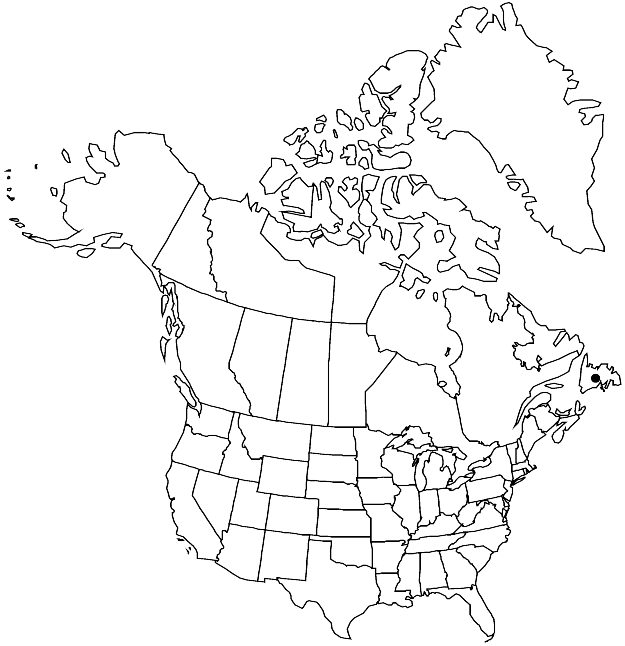Orthotrichum stramineum
in S. É. von Bridel, Bryol. Univ. 1: 789. 1827.
Plants 0.5–1 cm. Stem-leaves stiff, erect-appressed or slightly flexuose when dry, lanceolate, 1.8–2.4 mm; margins recurved to just below apex, entire; apex acute; basal laminal cells rectangular, walls thin, not nodose; distal cells 8–12 µm, 1-stratose, smooth or papillae 1–3 per cell, conic, low. Specialized asexual reproduction by gemmae on abaxial surface of leaves. Sexual condition gonioautoicous. Vaginula with hairs present. Seta 0.7–1.5 mm. Capsule emergent, elliptic-cylindric and strangulate, 0.8–1.5 mm, strongly 8-ribbed, ribs thick, broad when dry, constricted below mouth when dry; stomata immersed, 1/2 to completely covered by subsidiary-cells, cells projecting, inner walls thickened; peristome double; prostome absent; exostome teeth 8, reflexed to revolute when old and dry, finely and evenly papillose; endostome segments 8 or 16, well developed, of 1 or 2 rows of cells, exterior surface smooth or finely striate. Calyptra oblong, smooth, rarely naked or hairs few, hairs variably smooth or papillose by projecting walls. Spores 10–15 µm.
Habitat: Trees
Elevation: low to moderate elevations (10-500 m)
Distribution

Nfld. and Labr. (Nfld.), Europe, Asia
Discussion
Orthotrichum stramineum is distinguished by its rather long, elliptic (fat), strongly ribbed capsules that are strangulate. The hairy vaginula and the shape of the capsule separate O. stramineum from O. stellatum.
Selected References
None.